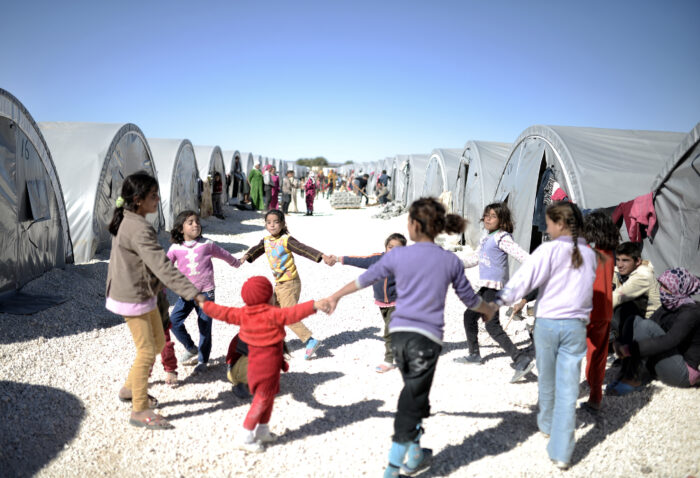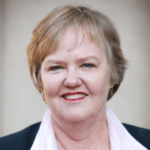By Elizabeth Ferris and Diana Rayes
Well over half of Syria’s 17 million population are now displaced: 7 million inside Syria and another 6.7 million as refugees, mostly in neighboring Turkey, Lebanon and Jordan. For over a decade, these three countries have hosted Syrian refugees with no end in sight. Prospects for voluntary return to Syria continue to be dim, and few opportunities remain for displaced Syrians to seek refuge elsewhere. As a result, most refugees remain stuck in limbo and the governments hosting them continue to search for additional support. While local populations welcomed the refugees initially – and indeed the expectation in all three countries was that the displacement would be a temporary phenomenon — that welcome is wearing thin.
This has resulted in reduced protection for Syrian refugees and increasing pressure from host country governments on Syrian refugees to return despite strong evidence that returning refugees are subject to detention, disappearance, and torture upon return to Syria.
“Prospects for voluntary return to Syria continue to be dim, and few opportunities remain for displaced Syrians to seek refuge elsewhere.”
As analyzed in a series of recent reports on Turkey, Lebanon and Syria by economists in the region, the situation is getting worse. All three governments are experiencing growing economic problems as a result of COVID-19 and the policies implemented to slow the spread of the virus. Poverty levels among their populations are rising and rising even higher for Syrian refugees. Refugees are scapegoated for countries’ economic problems, particularly in Turkey. While all three governments have received substantial international assistance – mostly through the UN for Lebanon and Jordan and mostly through the European Union in the Turkish case – it hasn’t been enough.
While the typical response is to call for more humanitarian aid to help both the refugees and relieve pressure on host governments, this is unlikely to provide the needed support. The fact is that the international humanitarian system – and humanitarian donors – are over-stretched. Estimated funding of the Syrian regional refugee response reached almost 6 billion USD in 2020 — only 53 percent (3.2 billion USD) of which was funded. Between the demands of COVID-19 and new emergencies – such as Afghanistan – humanitarian donors just do not have the funds to provide the needed support.
What is to be done? First, it’s time to look for new sources of support beyond humanitarian relief. The economists writing these studies, for example, suggest looking at trade policy and working with the World Trade Organization to increase support for refugee-hosting countries and factoring debt relief into international support for refugees. Development actors, such as the World Bank, have developed mechanisms to provide more support to middle-income refugee-hosting governments – these are good moves and need to be maintained and expanded. Displacement is no longer just a humanitarian issue – it is a development issue with long-ranging consequences for national development aspirations.
This brings us to our second point. While the international system must do more to support refugee-hosting governments and strengthen responsibility-sharing, the governments of countries hosting large numbers of refugees need to recognize – and plan for – the fact that the refugees are likely to stay for the foreseeable future. After ten years, this is not a temporary phenomenon.
“Narratives don’t change overnight. However, we know that political leadership and fostering social cohesion between refugees and host communities makes a difference.”
A minority of the Syrian refugees in these three countries have work permits; most work in the informal sector with the uncertainty and the exploitation that this implies. Bringing the refugees into the formal economies would benefit both the refugees and the host community. Allowing them to work legally – and pay taxes – would be an asset that would pay off in the long run. Educating refugee children and taking advantage of the skills that refugees bring would strengthen the human capital of the receiving countries – and contribute to economic growth and prosperity. The alternative of allowing large numbers of people to live on the margins of society – for years – is frightening to contemplate.
In all three countries, publicly acknowledging that the refugees are not going to go home – at least not any time soon – is politically difficult. In some countries, even the term ‘integration’ of refugees provokes a backlash. The narrative needs to change – from seeing refugees as a burden to seeing them as resources, from seeing them as outsiders to including them in community life. How to do that? Narratives don’t change overnight. However, we know that political leadership and fostering social cohesion between refugees and host communities makes a difference.
Without these changes – both more support from the international community and moves toward greater inclusion of refugees in national life of refugee-hosting countries – we are likely to see a progressive deterioration in the lives of refugees with far-reaching human, economic and security consequences. If the situation continues on its present course another ten years, refugees will become poorer and host countries more economically stressed. Over ten years into the regional refugee response effort, we should take this opportunity to learn from years past and change the approach towards Syrian refugees in these host countries.

